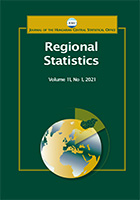Lutheran Network – Spiš (Szepesség) refugees in post-Trianon Hungary
Lutheran Network – Spiš (Szepesség) refugees in post-Trianon Hungary
Author(s): Balázs Ablonczy, Gábor Koloh, Attila BátorfySubject(s): History, Social Sciences, Economy, Geography, Regional studies
Published by: Központi Statisztikai Hivatal
Keywords: Trianon treaty; refugees; Interwar Period; Hungary; Spiš Region; social network
Summary/Abstract: After the First World War, Hungary was defeated and lost approximately two-thirds of its territory. Of the occupied territories, one region, the Spiš (Szepes) region, which is now Slovakia, had a special situation. In both economic and social terms, Spiš was one of the most complex regions of historical Hungary. After the territorial settlements, a significant proportion of people from the other side of the border moved to post-Trianon Hungary. The people from Spiš were trying to preserve some sense of community, as evidenced by the Spiš Directory (Szepesi Címtár) published by the Spiš Association (Szepesi Szövetség) in 1931. This study examines and analyzes this source. Out of all the data in the Spiš Directory, the authors processed the gender, residence, social status and occupation of 3,745 people (87.1%) using the international standard classification (HISCO/HISCLASS). The study has led to conclusions about the residence distribution of the Spiš refugees in Hungary, the correlations between denominational and spatial distribution, and urban and rural networks. The results show that the influence of the diaspora on the people of Felvidék (present-day Slovakia) was strong in general but especially among landowner refugees. In terms of religiosity, the country's traditional religion became dominant, attracting settlements that were not otherwise part of the country's more developed cities. The Spiš community presents a stronger, network-like pattern in its distribution within the capital, Budapest, typically concentrated in elite and working-class districts, even in this period. In examining the Spiš refugees, it is also important to emphasize that their arrival provided the country with considerable human capital benefits.
Journal: Regional Statistics
- Issue Year: 14/2024
- Issue No: 01
- Page Range: 3-18
- Page Count: 16
- Language: English

